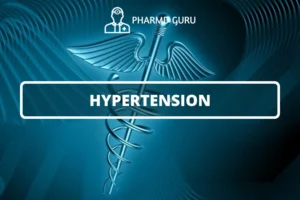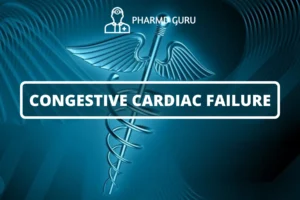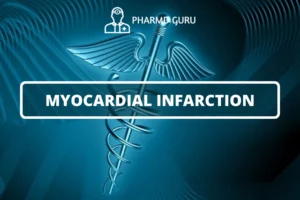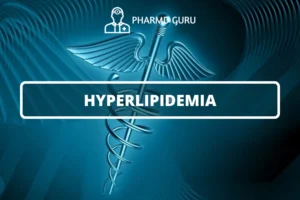Angina pectoris, commonly referred to as angina, is a symptom of an underlying heart condition characterized by chest pain or discomfort. It occurs when the heart muscle doesn’t receive enough oxygen-rich blood. In this article, we will delve into the etiopathogenesis of angina pectoris and explore the pharmacotherapy options available for its management.
SCROLL DOWN TO THE BOTTOM OF THIS PAGE FOR ACTUAL NOTES.
Table of Contents
- Introduction: Understanding Angina Pectoris
- Etiology and Risk Factors
- Pathophysiology of Angina Pectoris
- Types of Angina
- Clinical Presentation and Diagnostic Evaluation
- Non-pharmacological Interventions
- Pharmacotherapy for Angina Pectoris
- Nitroglycerin and Nitrate Preparations
- Beta-Blockers
- Calcium Channel Blockers
- Ranolazine
- Combination Therapy
- Personalized Treatment Approach
- Treatment Guidelines and Recommendations
- Adherence and Lifestyle Modifications
- Monitoring and Follow-Up
- Potential Complications
1. Introduction: Understanding Angina Pectoris
Angina pectoris is a symptom that arises from an imbalance between the supply and demand of oxygen to the heart muscle. It is often described as a feeling of pressure, squeezing, or tightness in the chest, although the symptoms can vary among individuals. Angina is typically triggered by physical exertion or emotional stress and can be relieved with rest or medication.
2. Etiology and Risk Factors
The development of angina pectoris is often associated with underlying coronary artery disease (CAD), which occurs due to the narrowing or blockage of the coronary arteries that supply blood to the heart. Risk factors for angina pectoris include:
- Atherosclerosis (build-up of plaque in the arteries)
- Hypertension (high blood pressure)
- High cholesterol levels
- Smoking
- Diabetes
- Obesity
- Family history of heart disease
- Sedentary lifestyle
Identifying and addressing these risk factors is essential for managing angina and reducing the risk of complications.
3. Pathophysiology of Angina Pectoris
Angina pectoris occurs due to an imbalance between myocardial oxygen supply and demand. The narrowing or blockage of coronary arteries restricts blood flow to the heart muscle, resulting in inadequate oxygen delivery. This can lead to the activation of pain-sensing nerve fibers in the heart, causing the characteristic chest pain or discomfort.
4. Types of Angina
There are different types of angina, including:
- Stable angina: Typically predictable chest pain that occurs during physical exertion or emotional stress and subsides with rest or medication.
- Unstable angina: Chest pain that occurs at rest or with minimal exertion and is unpredictable. Unstable angina is considered a medical emergency as it may indicate an increased risk of heart attack.
- Variant (Prinzmetal’s) angina: Chest pain caused by coronary artery spasm, which can occur at rest and is often unrelated to physical exertion or emotional stress.
The specific type of angina helps guide the treatment approach.
5. Clinical Presentation and Diagnostic Evaluation
Angina pectoris is characterized by chest pain or discomfort, which may radiate to the arms, shoulders, jaw, neck, or back. Other symptoms may include shortness of breath, nausea, and fatigue. Healthcare providers may conduct various diagnostic tests to evaluate angina, such as:
- Electrocardiogram (ECG)
- Exercise stress test
- Coronary angiography
- Cardiac CT scan
- Stress echocardiogram
Accurate diagnosis and assessment of the severity of angina are crucial for determining the most appropriate treatment plan.
6. Non-pharmacological Interventions
In addition to pharmacotherapy, non-pharmacological interventions play a significant role in managing angina pectoris. These may include:
- Lifestyle modifications: Adopting a heart-healthy diet, engaging in regular physical activity, maintaining a healthy weight, and quitting smoking.
- Stress management: Utilizing relaxation techniques, such as deep breathing exercises or meditation, to reduce emotional stress.
- Avoiding triggers: Identifying and avoiding factors that provoke angina, such as extreme temperatures or heavy meals.
These interventions can help reduce the frequency and severity of angina episodes.
7. Pharmacotherapy for Angina Pectoris
Pharmacotherapy is a key component of angina management and aims to relieve symptoms, improve exercise tolerance, and prevent complications. Several classes of medications are used in the treatment of angina pectoris.
8. Nitroglycerin and Nitrate Preparations
Nitroglycerin and other nitrate preparations are commonly prescribed for the relief of acute angina episodes. These medications work by relaxing and widening the blood vessels, improving blood flow to the heart. Nitroglycerin can be administered sublingually or through topical patches or sprays.
9. Beta-Blockers
Beta-blockers are frequently prescribed as a long-term treatment option for angina pectoris. These medications reduce heart rate and blood pressure, decreasing the heart’s oxygen demand. Beta-blockers can help alleviate symptoms and improve exercise tolerance.
10. Calcium Channel Blockers
Calcium channel blockers are another class of medications used to manage angina. They relax and widen the blood vessels, enhancing blood flow to the heart and reducing its workload. Calcium channel blockers can be particularly beneficial for individuals who cannot tolerate beta-blockers or have certain coexisting conditions.
11. Ranolazine
Ranolazine is a medication specifically approved for the treatment of chronic angina. It works by reducing the heart’s demand for oxygen and improving its efficiency in utilizing available oxygen. Ranolazine may be prescribed in combination with other medications for better symptom control.
12. Combination Therapy
In some cases, combination therapy involving multiple medications may be necessary to effectively manage angina pectoris. The specific combination depends on individual factors and the type and severity of angina. Combinations may include nitroglycerin, beta-blockers, calcium channel blockers, or ranolazine.
13. Personalized Treatment Approach
Treatment for angina pectoris should be tailored to each patient’s unique circumstances, including their symptoms, underlying conditions, medication tolerability, and preferences. A personalized treatment approach ensures optimal management and improves quality of life.
14. Treatment Guidelines and Recommendations
Various professional organizations and societies have established guidelines and recommendations for the management of angina pectoris. These guidelines provide evidence-based recommendations on diagnostic criteria, treatment goals, and medication selection.
15. Adherence and Lifestyle Modifications
Adherence to prescribed medications and lifestyle modifications is crucial for effective angina management. Healthcare providers play a vital role in educating patients about the importance of adherence and supporting them in making necessary lifestyle changes.
16. Monitoring and Follow-Up
Regular monitoring and follow-up visits with healthcare providers are essential to assess treatment efficacy and make adjustments as needed. Periodic evaluations of symptoms, medication side effects, blood pressure, and cardiac function help ensure optimal management of angina pectoris.
17. Potential Complications
Untreated or poorly managed angina pectoris can lead to various complications, including:
- Myocardial infarction (heart attack)
- Arrhythmias (abnormal heart rhythms)
- Heart failure
- Reduced quality of life
Proactive management and adherence to treatment can help minimize the risk of these complications.
ACTUAL NOTES:




